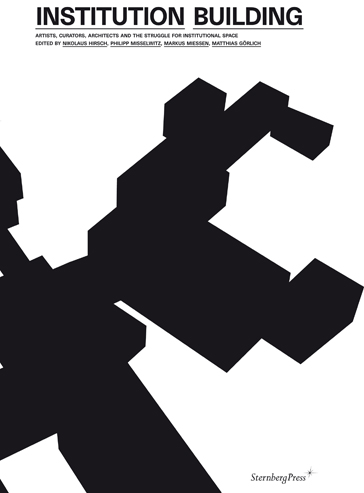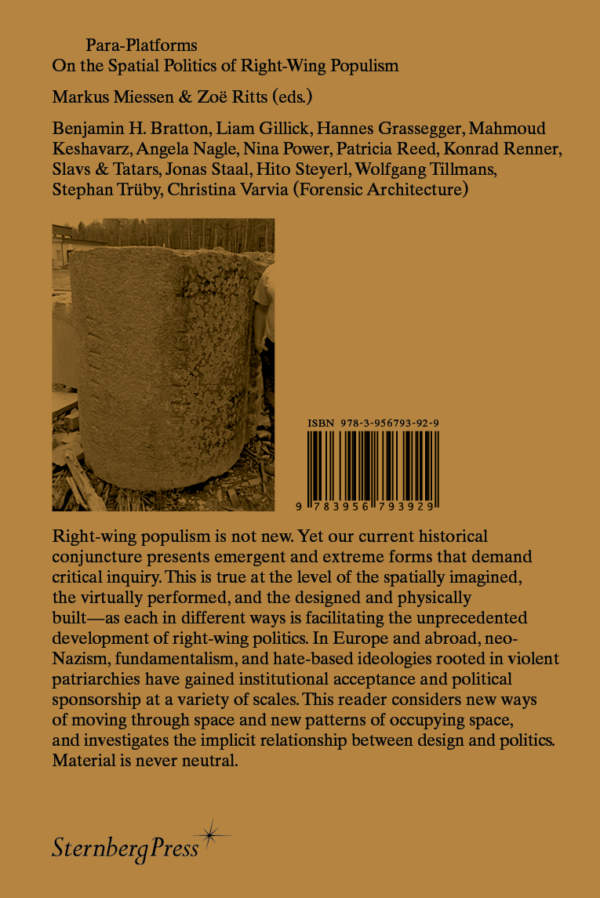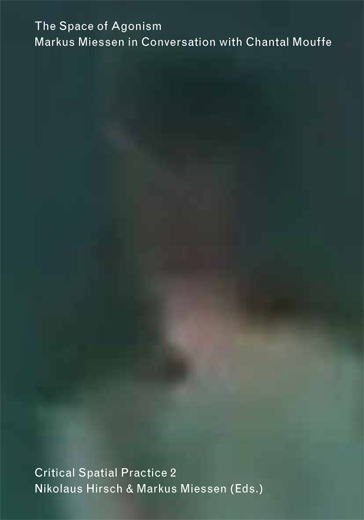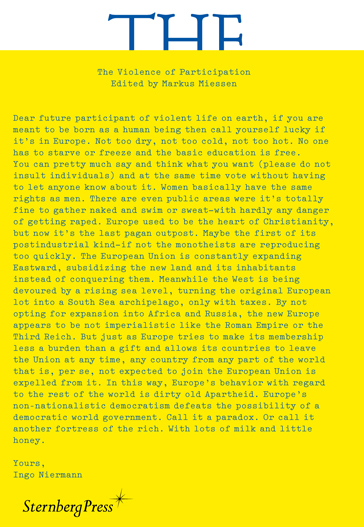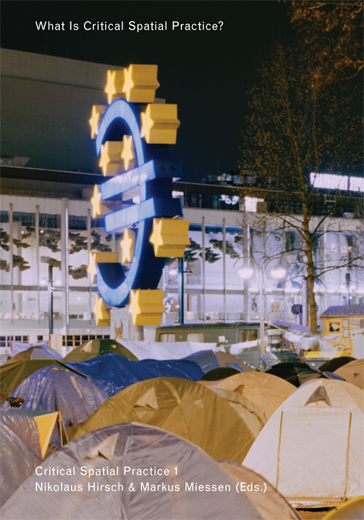Your cart is currently empty.
Cart
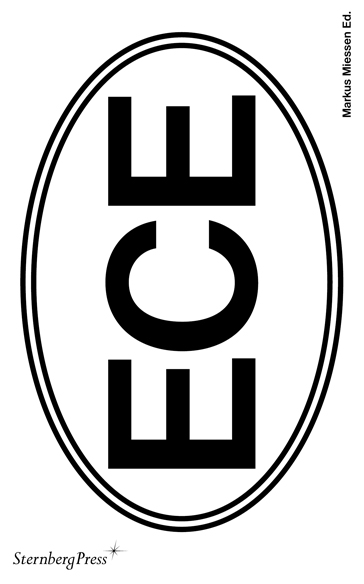
East Coast Europe
Contributions by Marina Abramović, Can Altay, Paddy Ashdown, Zdenka Badovinac, Genevieve Maitland Hudson with Cyril Blanc, Katherine Carl, Mladen Dolar, Lisa Farjam, Jacques Le Goff, Reinier de Graaf, Carin Kuoni, Zak Kyes, Aaron ... more
“East Coast Europe,” which took place during Spring 2008, is a project about the perceptions of contemporary European identity and its relation to spatial practices and international politics.
The title “East Coast Europe” is a word play. “Europe” in the title is the central topic for investigation, its contemporary culture, expansion, and its status as a continuing social project. “East Coast” refers to two distinct edges of Europe, both real and imaginary—the geographical East Coast of the United States of America and the political “East Coast” of the European Union. The project invited leading figures in culture and politics from the two east coasts—of the United States of America, and of the countries in the European Union and its vicinity to comment on their perception of Europe today. East Coast Europe dives into the urgent details of a dense network of contemporary experience of the European Union’s extensive exchange of knowledge, people, and goods with the East Coast of the United States and also with its own eastern border. What are its challenges and possibilities for social, political and spatial practices?
East Coast Europe was commissioned and produced by the Consulate General of Republic of Slovenia in New York City, during Slovenia’s Presidency of the Council of the EU in 2008, with support of the EUNIC Network New York and Delegation of the European Commission, New York. The ECE project is conceived by Katherine Carl, Srdjan Jovanović Weiss, Markus Miessen, and Alenka Suhadolnik.
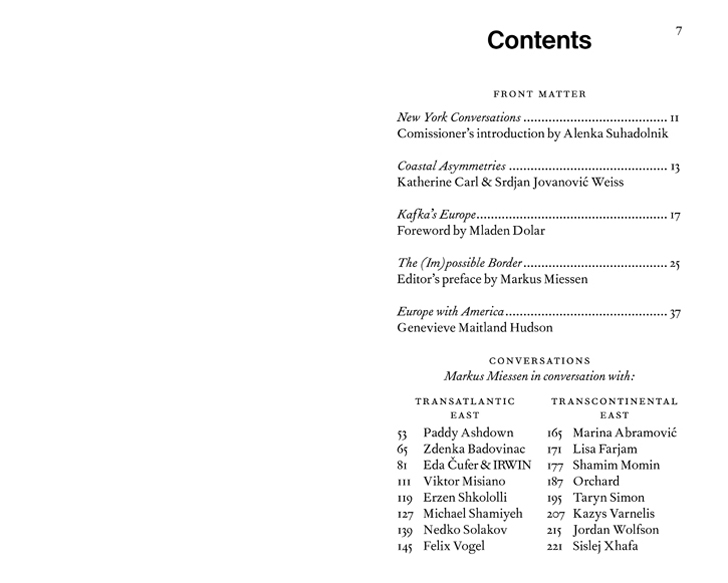
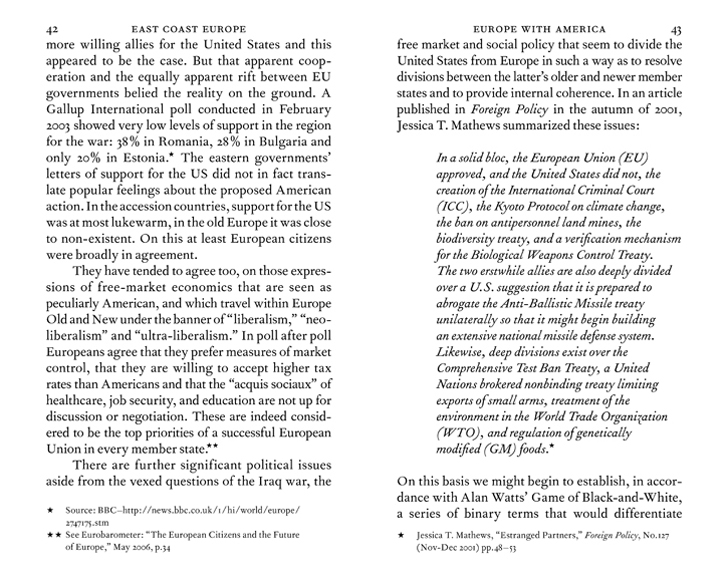
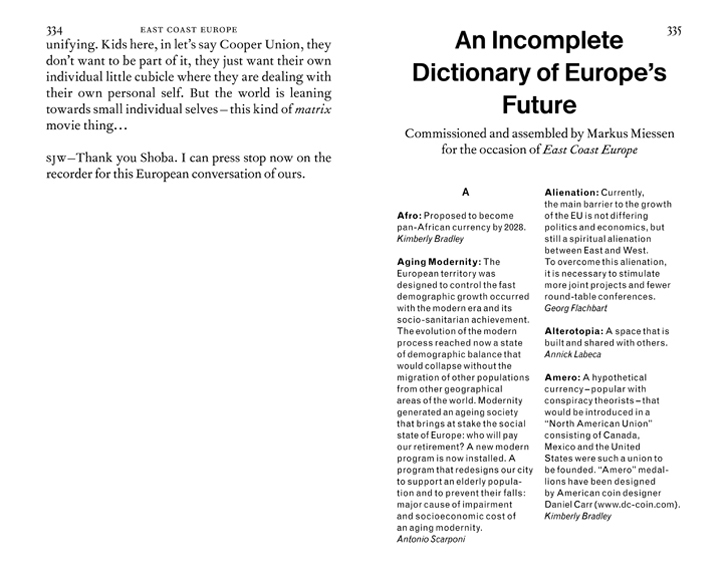
Softcover
€12.00
In applying a spatial, geographical and cultural eye to the peripheries of a Europe suddenly profoundly unsure of its identity and its future, this book attempts to outline some of the issues and responses to the idea of Europe as an entity […] it presents an eastern border as defined as its correspondent coast on the other side of the Atlantic. To study its borders is to study its present, its future and its very existence.
— Edwin Heathcote,
Architecture Critic, Financial Times, London
This new encyclopedic endeavor is the necessary injection of optimism that Europe urgently needs. A brilliant toolbox for the 21st century.
— Hans Ulrich Obrist,
Director of International Projects, Serpentine Gallery, London
A timely and eminently readable book. This collection has a geographic rubric—in this case an ostensibly European one—but then encourages us, subtly and sneakily so, to rethink how we conceive of geography in the first place. With its pastiche of ideas drawn from the worlds of art, architecture, politics, its spirit and approach will have multiple echoes beyond this moment, beyond this space.
— Negar Azimi,
Senior editor, Bidouin, New York
